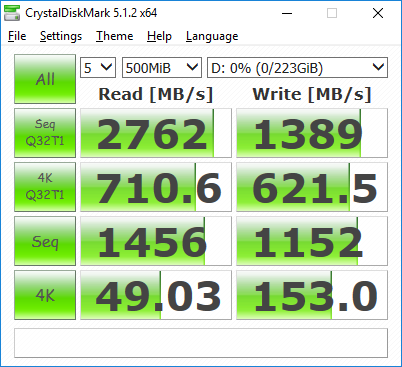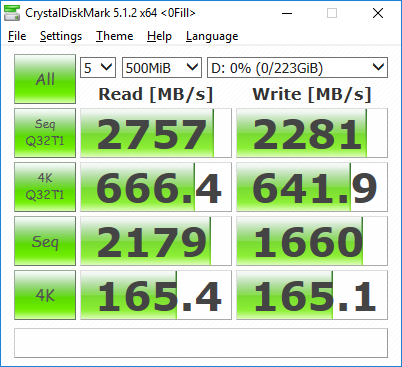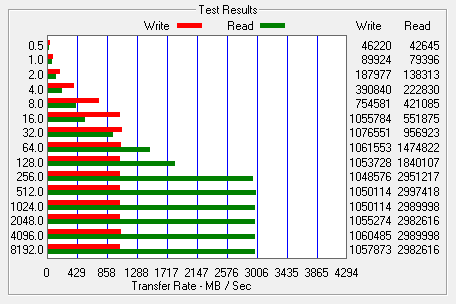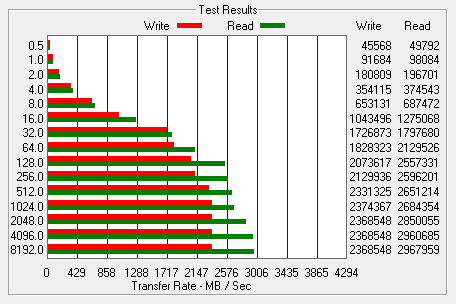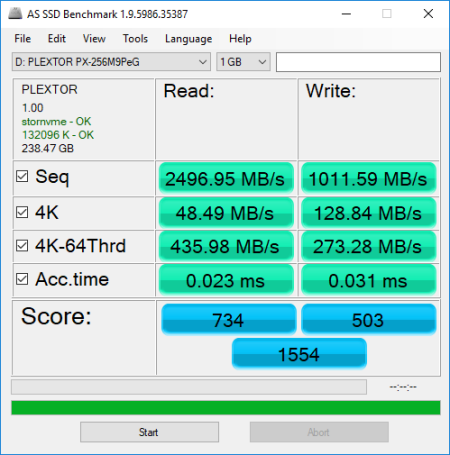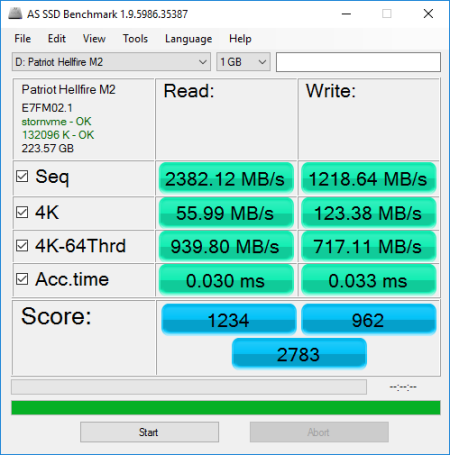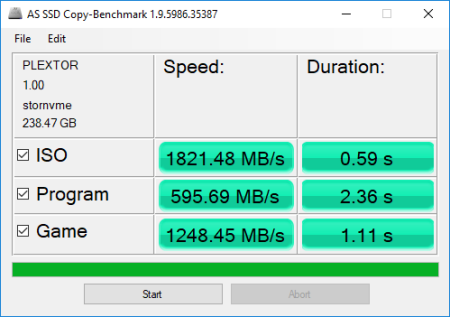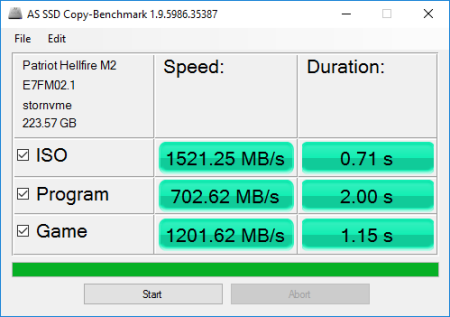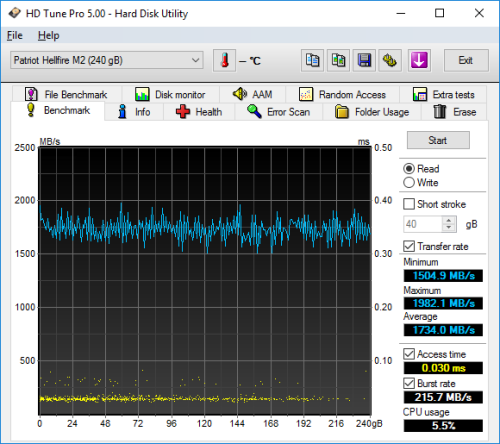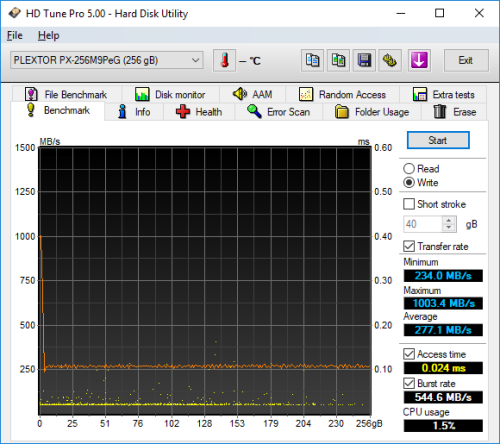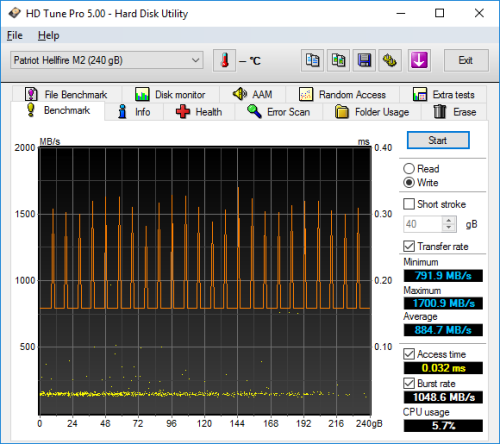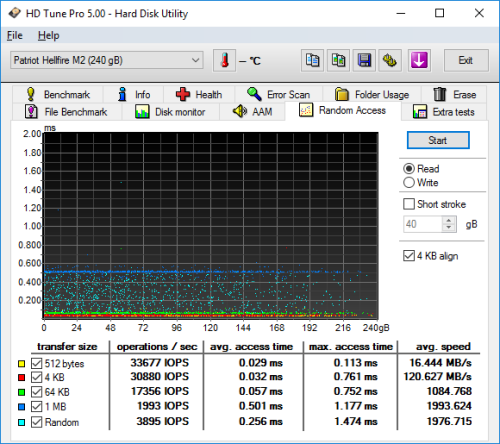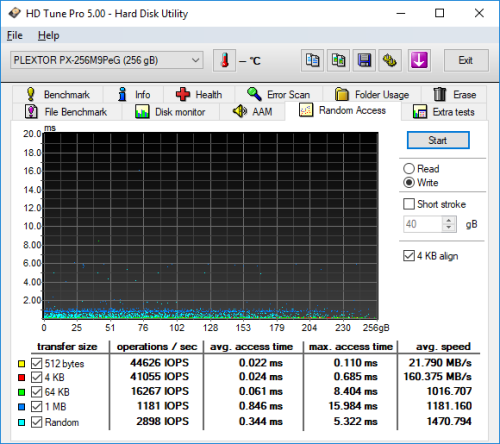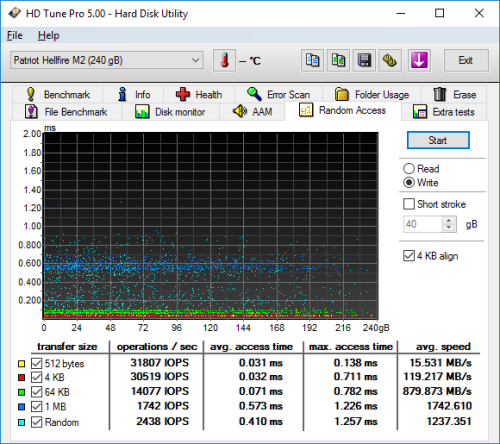

Model: Plextor M9Pe 256GB M.2 NVMe PCIe Solid State Drive
Manufacturer: Plextor
Provided By: Plextor LLC
As one of the biggest names in the storage industry, Plextor doesn't need much of an introduction. For nearly twenty years, they've produced some of the best optical drives the industry has seen. Known the world over for their quality, performance, and features, these drives have become favorites among consumers and professionals alike. Today, Plextor continues to lead the way by bringing cutting edge storage technologies to market. Along with an assortment of high-performance DVD and Blu-ray drives, the company offers a growing number of solid state drives.
 At this year's Consumer Electronics Show (CES), Plextor unveiled its latest PCIe SSD, the M9Pe. Optimized for high-level PC gaming, this M.2 form factor drive is powered by Marvell's 88SS1093 "Eldora" controller and is available with up to 1TB of Toshiba's 64-layer BiCS3 3D TLC NAND flash. To compensate for the slow write speeds typically associated with TLC NAND, the M9Pe uses Plextor's exclusive PlexNitro cache acceleration technology to optimize performance without taking up any space on the drive. The M9P is also equipped with a PCIe Gen3 x4 NVMe 1.2 interface to provide higher bandwidth and lower latency than SATA SSDs.
At this year's Consumer Electronics Show (CES), Plextor unveiled its latest PCIe SSD, the M9Pe. Optimized for high-level PC gaming, this M.2 form factor drive is powered by Marvell's 88SS1093 "Eldora" controller and is available with up to 1TB of Toshiba's 64-layer BiCS3 3D TLC NAND flash. To compensate for the slow write speeds typically associated with TLC NAND, the M9Pe uses Plextor's exclusive PlexNitro cache acceleration technology to optimize performance without taking up any space on the drive. The M9P is also equipped with a PCIe Gen3 x4 NVMe 1.2 interface to provide higher bandwidth and lower latency than SATA SSDs.
Like its predecessors, the M9Se is offered in a number of different capacities and configurations. The drive is available by itself in the M.2 2280 form factor (M9PeGN), with a small aluminum heatsink (M9PeG) and as an HHHL add-in card (M9PeY) that's equipped with an extra large heatsink and programmable 3-mode RGB LED lights. For this review, Plextor sent us the 256GB version of the heatsink equipped M.2 drive, which is capable of delivering up to 3,000 MB/s sequential read and 1,000 MB/s sequential write speeds along with up to 180,000 random read and 160,000 random write IOPS.
| Plextor M9Pe 256GB M.2 PCIe NVMe Solid State Drive | |||||||||||||||||||||||||||||||||||
General Specifications
Performance
Environment and Reliability
Dimensions and Weight
Other Features
|
Needless to say, this is only a taste of what the M9Pe has to offer. To give you an idea of what to expect, we'll take a closer look at Plextor's new PCIe SSD and then see how well it performs. Does the M9Pe have what it takes? Can it deliver the performance and features that we've come to expect from Plextor? Keep reading as we find out.
The M.2 2280 version of the M9Pe comes packaged in an eye catching black and rainbow colored box. In addition to a small, plastic window which lets you see what the drive looks like, the front advertises key features like its 256GB capacity, support for NVMe, advanced heat sink design and 5 year warranty. The back of the box provides a bit more information regarding the M9Pe's specifications and features.


Inside the box, you'll find a clamshell case containing the MPSe and a small mounting screw. I was a bit surprised to see that Plextor did not include any documentation with the drive.

Physical Features:
The M9Pe uses the 2280 form factor for M.2 (NGFF) SSDs. It measures 80.00 x 22.80 x 4.70 mm and tips the scales at a mere 13g. The drive also has an "M key" edge connector which provides PCIe SSDs with up to 4x lanes of bandwidth.

To help dissipate heat, the top of the M9Pe is covered by a heatsink. This heatsink's design is similar to the one found on the M8Se. However, this time around it is red and black.

Like the M8Pe and M8Se, the M9Pe uses Marvell's 88SS1093 controller. This 8 channel, PCIe Gen 3 x4 NVMe SSD controller is equipped with three ARM Cortex R5 cores and features support for 15nm TLC/MLC/SLC and 3D NAND. The 88SS1093 also integrates Marvell’s third generation NANDEdge error-correcting, low-density parity check (LDPC) technology for higher reliability and endurance.


For the 256GB version of the M9Pe, Plextor used Toshiba's new 64-layer BiCS3 3D TLC NAND flash. Looking at the pictures above, you can see that there are two 128GB NAND flash packages on the top of the PCB. The drive also has a single NANYA 512MB LPDDR3 DRAM memory chip that is used for caching.
The test system used in this review is equipped with an Intel Core i7-6700K CPU, GIGABYTE GA-Z170X-UD3 motherboard, 32GB (16GB x 2) of Crucial Ballistix Sport LT DDR4 memory, Samsung 960 PRO 512GB SSD and a GIGABYTE GeForce GTX 1060 WINDFORCE OC 6G graphics card. For the operating system, I installed a fresh copy of Windows 10 Enterprise.
To test the performance of Plextor's M9Pe SSD, I ran a series of benchmarks using CrystalDiskMark, HD Tach RW, ATTO Disk Benchmark, AS SSD, HD Tune Pro, Anvil's Storage Utilities, Iometer and PCMark 8. For comparison, I've also included test results from the Patriot Hellfire, ADATA XPG SX8000, Samsung 960 PRO, Toshiba OCZ RD400, Samsung 950 PRO, Toshiba OCZ VX500, ADATA Ultimate SU800, Plextor S2C, Crucial M300, Plextor M7V, PNY CS1311, OCZ Trion 150, PNY CS2211, Plextor M6V, Crucial BX200, OCZ Trion 100, Kingston HyperX Savage, Crucial MX200, OCZ Vector 180 and Samsung SSD 850 EVO.

As I mentioned earlier, the M9Pe is based on Marvell's 88SS1093 controller chip. Looking at the screenshot above, you can see that it performs equally well with both incompressible (0%) and compressible (100%) data.
CrystalDiskMark 5.1.2:
First, I ran a few quick tests using CrystalDiskMark. This benchmark tool measures the performance of a storage device by testing its sequential read and write speeds as well as its random read and write speeds using blocks 512K and 4K in size.
According to Plextor, the 256GB version of the M9Pe is capable of reading at 3,000 MB/s and writing at 1,000 MB/s. Looking at the screenshot above, you can see that the drive had no problems reaching these speeds in CrystalDiskMark's sequential read and write tests.
The M9Pe performed equally well when using highly compressible 0x00 (0 Fill) data. This time around, the drive was able to read at 3041 MB/s and write at 1066 MB/s.
HD Tach RW 3.0.4.0:
Next, I used HD Tach to test the M9Pe's read, write and burst speeds as well as its seek times and CPU usage.

Looking at the screenshot above, you can see that the M9Pe had average read and write speeds of 1,298.7 MB/s and 289.6 MB/s respectively, as well as a burst speed of 931.1 MB/s. The screenshot also shows that, like most other TLC-based SSDs, the M9Pe uses some sort of SLC caching. The drive starts writing at about 1,050 MB/s and then drops to about 280 MB/s when the write operation exceeds the size of the cache. The cache on the 256GB version of the M9Pe is also surprisingly small. It appeared to be about 4GB in size, which is about 1.5% of the drive's total capacity.
ATTO Disk Benchmark 2.46:
I also used ATTO Disk Benchmark to test the M9Pe's sequential read and write speeds. The tests are run using blocks ranging in size from 0.5KB to 8192KB and the total length set to 256MB.
When tested with ATTO, the M9Pe's read speeds topped out at about 2,997 MB/s and its write speeds at 1,060 MB/s.
AS SSD:
AS SSD is a benchmark designed specifically for solid state drives. The application contains five synthetic tests used to determine the sequential and random read and write performance of a drive.
AS SSD also includes a copy benchmark. This test copies an ISO (two large files), program (many small files) and game (small and large files), returning the speed and duration of each.
HD Tune Pro 5.00:
Next, I ran a series of tests using HD Tune Pro. This hard disk utility measures a drive's performance by testing its sequential read and write speeds as well as its access time, burst rate and CPU usage. For this review, I'm also going to use it to benchmark the M9Pe's random read and write speeds, random access times and the number of operations per second.
The M9Pe performed relatively well when benchmarked with HD Tune. The drive had average read and write speeds of 2297.6 MB/s and 277.1 MB/s, respectively, and a burst rate of about 157.6 MB/s when reading.
When writing 4KB blocks, the M9Pe reached 41,055 IOPS and had an average speed of 160.375 MB/s. The drive was slightly faster when reading, reaching 41,820 IOPS with an average speed of 163.359 MB/s.
Anvil's Storage Utilities:
Anvil's Storage Utilities is another benchmark designed with SSDs in mind. The standard storage benchmark measures a drive's performance by testing its transfer speeds, access times and IOPS.

Iometer:
Lastly, I ran a series of tests using Iometer. This tool can be configured to benchmark a number of things. In this case, I used it to measure the M9Pe's read and write speeds and the number of operations per second. The tests were run using random bytes and a queue depth of 3.

The M9Pe's performance was hit and miss when tested with Iometer. While the drive was able to read at an impressive 2,624.58 MB/s, its sequential write speed averaged out at only 307.16 MB/s.

While faster than many of the SATA SSDs, the M9Pe lagged behind the other PCIe SSDs when doing random reads and writes. In our tests, the drive was able to read at 211.88 MB/s and write at 272.03 MB/s.

According to Plextor, the 256GB M9Pe is capable of up to 180,000 IOPS when reading and 160,000 IOPS when writing 4K blocks. In our tests, the drive reached 54,240 random read IOPS and 69,640 random write IOPS. Increasing the queue depth had little impact on the M9Pe's random write performance. However, with the queue depth set to 32, the drive was able to reach 109,411 random read IOPS.
PCMark 8 - Storage Test:
PCMark 8 is a complete benchmark for Windows. It includes five benchmark tests, each designed around a specific scenario. The storage benchmark measures drive performance using real-world traces recorded from Adobe Creative Suite, Microsoft Office and a selection of popular games.

PCMark 8 also includes a consistency test which measures the performance consistency and degradation tendency of a storage system. The test reports the performance level at the start, the degraded steady-state and the recovered state as well as the number of iterations required to reach the degraded state and the recovered state. For this test, we are focusing on the Adobe Photoshop (Heavy) trace and will look at both the bandwidth and latency of the drive


The M9Pe didn't do as well as the other PCIe SSDs in this test. Its bandwidth dropped below 60 MB/s during the degradation and steady phases, pushing its latency above the 600ms mark. The M9Pe never really recovered either, topping out at a mere 73 MB/s.
TRIM Performance:
While SSD's offer many benefits, there are some downsides to using flash memory. One of the biggest issues people run into is performance degradation. Over time, an SSD will run out of fresh blocks and will have to write over data the file system has marked as deleted. This procedure is very complicated and can slow an SSD's write speeds considerably.
To fix this problem, most manufacturers have added TRIM support to their SSDs. The TRIM command allows an operating system, such as Windows 7, to tell an SSD which data blocks are no longer in use. Using this information, the drive pro-actively erases these blocks and adds them to the free block pool.

To test the M9Pe's TRIM and garbage collection functions, I first put the drive in a "dirty" state. I used Iometer to fill the entire drive and then ran a random write test for 30 minutes. Looking at the screenshot below, you can see that the M9Pe's average read and write speeds dropped to 138.1 MB/s and 429.9 MB/s, respectively.

Plextor M9Pe - Dirty
To see how well the M9Pe could recover, I let the computer sit for about 30 minutes and then reran the test. The drive's average write speed climbed up to 456.1 MB/s. However, its read speed lagged behind, averaging out at only 310.3 MB/s.

Plextor M9Pe - After TRIM
Lastly, I used Parted Magic to perform a secure erase on the M9Pe. With the drive wiped clean, it had average read and write speeds of 1,270.3 MB/s and 727.3 MB/s, respectively.

Plextor M9Pe - Secure Erased
Final Thoughts:
While not the fastest PCIe SSD to come through the 'Labs, the Plextor M9Pe delivers a lot of bang for your buck. Available with or without a heatsink, this compact, M.2 form factor SSD is powered by Marvell's 88SS1093 controller and is available with up to 1TB of Toshiba's 64-layer BiCS3 3D TLC NAND flash. Combine this with Plextor's PlexNitro technology and a PCIe Gen3 x4 NVMe 1.2 interface and you have a drive capable of delivering nearly six times the performance of your average SATA 6Gb/s SSD. In our sequential read and write tests, the 256GB version of the M9Pe was able to read at speeds as high as 3,042 MB/s and write at speeds in excess of 1,060 MB/s. The M9Pe also performed fairly well when doing random reads, but lagged behind other PCIe SSDs in our random write tests, producing less than 70,000 IOPS.
While Plextor's PlexNitro technology works well under normal workloads, it does have its limitations. If you have a heavy workload, where a consecutive write operation exceeds the size of the SLC cache, the M9Pe's write speed drops to non-accelerated levels. I also found this cache to be quite small. With the 256GB version of the M9Pe I wasn't able to write more than about 3GB worth of data before it filled and the write speed dropped below 300 MB/s. Given, this won't be an issue for the gamer looking to speed up load times, but if you have heavier workloads, you may want to consider an MLC NAND based SSD like the Plextor M8Pe.
According to Plextor, the M9Pe will be available some time March in 256GB, 512GB and 1TB capacities. The suggested retail prices are expected to range from about $110 up to $452 with the M.2 version reviewed here going for about $122.
Highs:
- Available in 256GB, 512GB and 1TB capacities
- PCIe 3.0 x4 interface with NVMe protocol
- Marvell 88SS1093 controller
- Equipped with Toshiba 64-layer BiCS3 3D TLC NAND
- Good sequential read and write performance
- PlexNitro technology optimizes performance without taking up SSD space
- Supports Plextor's True Speed technology
- M.2 2280 and HHHL PCIe form factors
- Large DRAM cache
- Reasonably priced
- 5 year warranty
Lows:
- Write speed drops when SLC cache is full
- SLC cache is small
- Lackluster random write performance
- Not supported by Plextor's PlexTool software
- Does not support hardware based encryption



